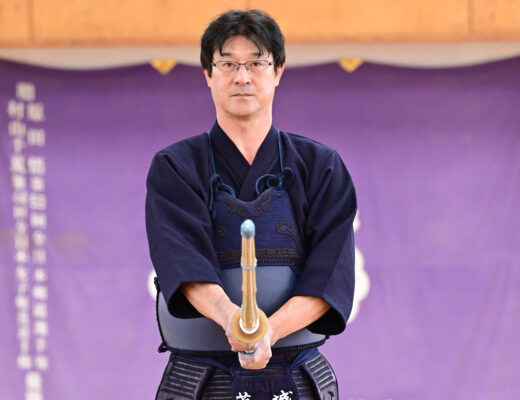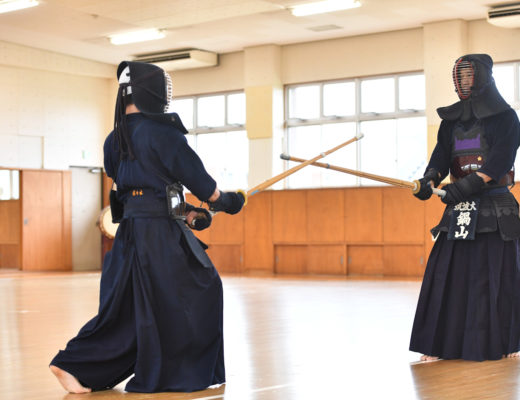2024.7 KENDOJIDAI
“Your Seme can be said to be effective when your opponent feels something and moves. To create this situation, a variety of ways of applying pressure are necessary,” says Nabeyama Takahiro. In order to learn these various techniques, it is important to study the movement of the Kensen and how to enter Maai. In this article, Nabeyama Sensei explains in detail how to do this.
Nabeyama Takahiro (Kyoshi 8th Dan)
Born in 1969 in Fukuoka Prefecture. He started Kendo at Imajuku Youth Kendo Club, and went to PL Gakuen High School and the University of Tsukuba. He won the individual and team titles at the All Japan High School Tournament (Inter-High) and won the All Japan Student Championship. After graduation, he entered the graduate school of the University of Tsukuba and became a researcher. He has participated in the All Japan Kendo Championship 10 times, participated in the World Kendo Championships twice, won the National Sports Festival (Kokutai), won the All Japan Interprefecture Tournament, and won the All Japan Teacher Tournament. Currently, he is an associate professor of physical education at the University of Tsukuba and the coach of the University of Tsukuba Kendo Club men’s team.

The All Japan Kendo Federation mentions the following points to keep in mind when teaching Seme and Kuzushi (breaking down) to advanced students in the “Textbook for AJKF Kendo Seminar”:
- Make students aware that when moving forward and backward or when separating, when fighting for Maai at a distance of one step or half a step, they don’t let their guard down, so that they can always take the initiative in executing techniques.
- Make students aware that forward or backward movement must be accompanied by a full spirit, and have them devise and study ways to develop a calm and composed attitude.
- Have students study the movements of the Kensen, and while having it aimed at the the spot between the opponent’s eyes or at their left eye, have them devise and study ways to, through suppressing and slapping their opponent’s Shinai, and by using Harai and Maki techniques, take away their opponent’s freedom of movement and create striking opportunities.
These points are very important, and I believe that the repeated study of the “fight for Maai” and the “movement of the Kensen” will help with today’s theme of pressuring Ura and Omote.
Simply closing the distance does not mean you have pressured the opponent. You have pressured someone when they respond emotionally, for example when they feel that their Men will be struck. This emotional response* may cause them to raise their hands or to attack in a hurry.
When fighting our peers or seniors in Jigeiko, our opponents do not often move according to principles. However, if you attack without meaning, you are just wasting your time.
I believe that sharp Men techniques are the cornerstone of the offense. Out of the four targets, Men is the furthest, and it is not easy to hit. If you have this Men, your opponent will feel threatened and they will try to avoid being hit. However, if you only use your best technique, it won’t be perceived as a threat. This is where the “fight for Maai” and the “movement of the Kensen” come into play.
If the opponent is wary of Men and raises their hands, there is an opportunity to strike Kote. On the other hand, the opportunity to strike Men arises when the opponent opens or lowers their Kensen, so we must create this situation by for example pressuring Kote. When pressuring your opponent, it is important to consider the situation you want your opponent to be in. Do you want to pressure them and break down their hands, or do you want to draw out their attack? You must change the way you take Maai and how you move your Shinai according to your objective. To achieve this, it is necessary to use precise Seme while paying attention to the movement of the Kensen and Maai, and to strike boldly with commitment (Sutemi) when you perform a technique.
Learn the four ways of Seme
The rest of this article is only available for Kendo Jidai International subscribers!





